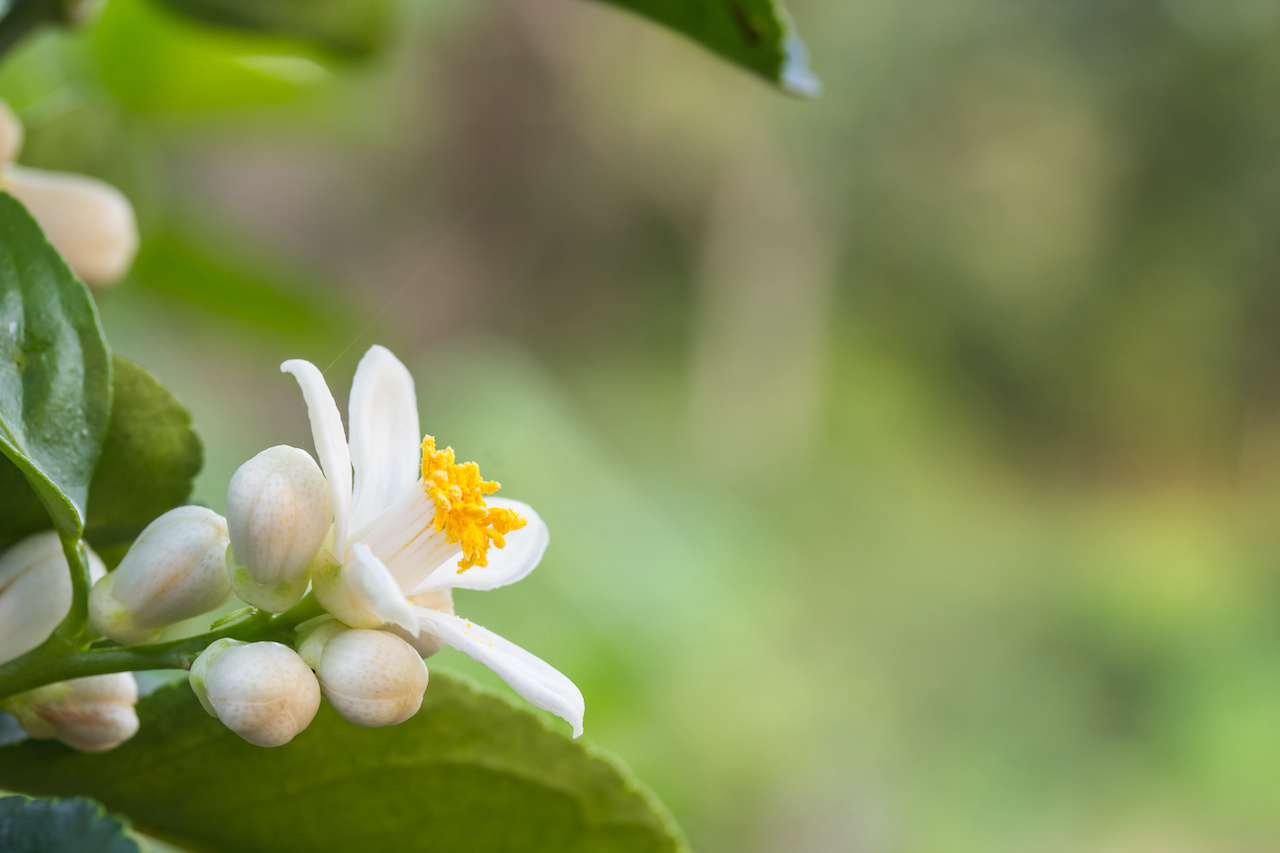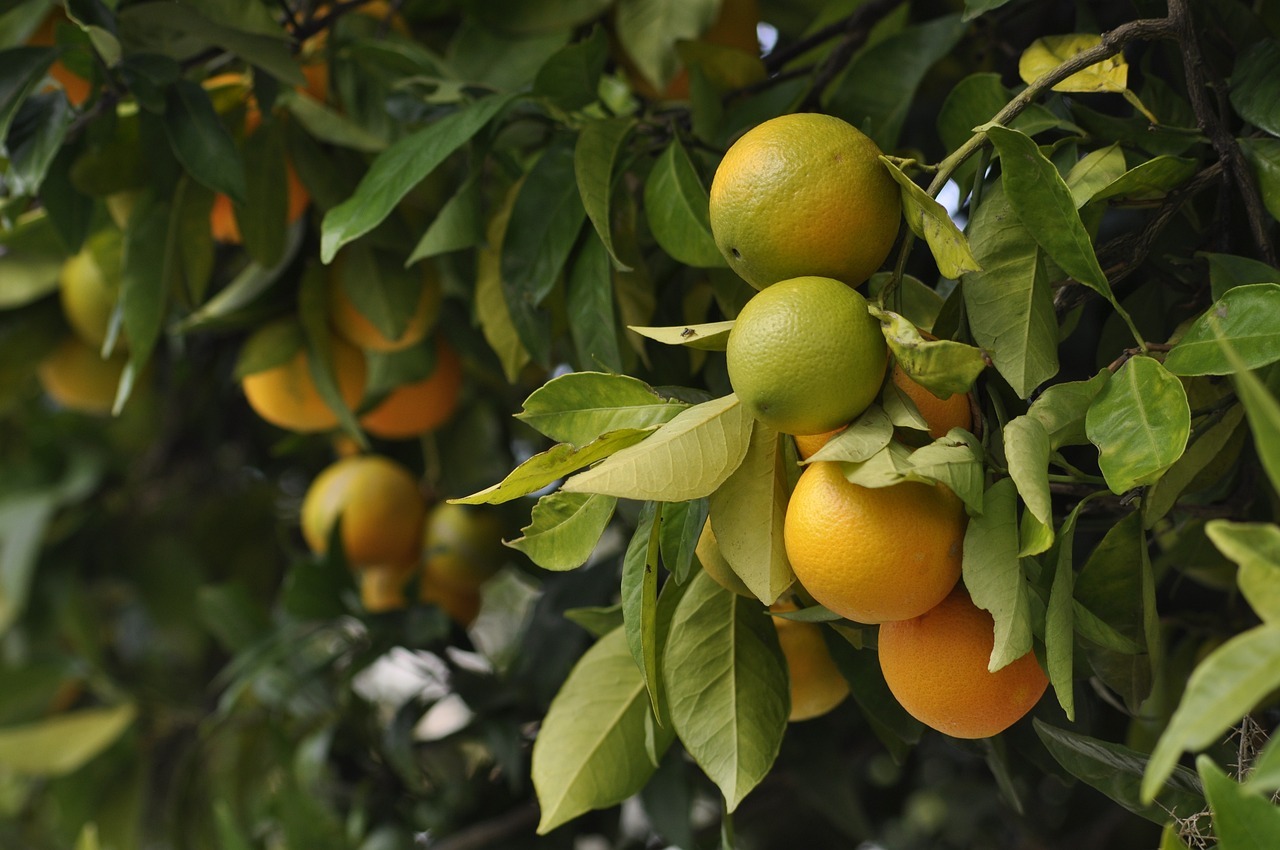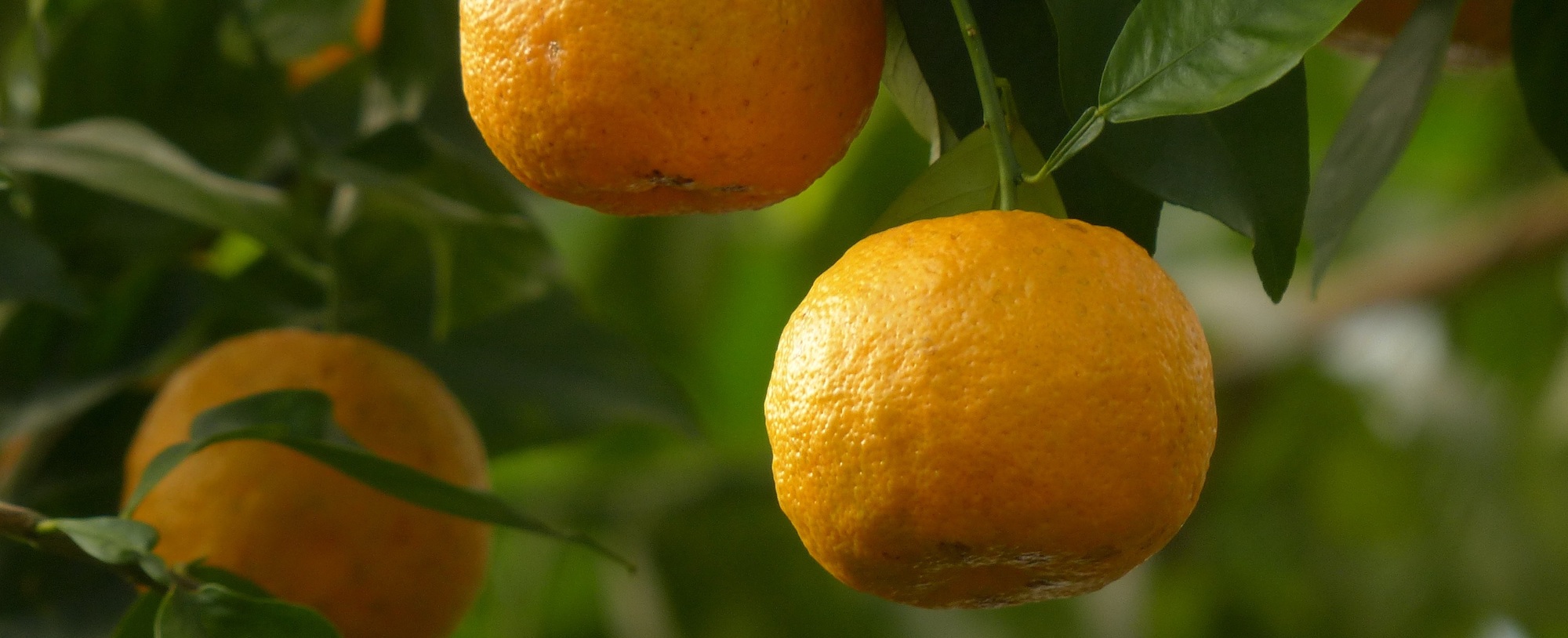Citrus x aurantium
ENCYCLOPEDIA BOTANICA / BITTER ORANGE
Every part of the bitter orange is more aromatic than its sweeter cousin. Though best known for its bitter peel and famous marmalade, this botanical is also responsible for producing neroli and petitgrain essential oils, as well as orange blossom water.
Description & Habitat
Common names for this aromatic treasure are the bitter, Seville or sour orange. The bitter orange is a much older (and hardier) species than sweet orange (Citrus sinensis) and traces its origins to southeast Asia. It was brought to Spain by the Moors around the 8th or 9th century, and was reported growing in Sicily in 1002 CE. For 500 years the bitter orange was the only orange in Europe.
The tree grows between 3–9m tall, making it smaller and more compact than sweet orange trees, and it is long-lived—some trees in Spain are reported to be over 600 years old. It grows readily from seed and can be used as a root stock for other citrus. It has some spines to deter predators, and clusters of highly fragrant white flowers that develop into smallish, spherical fruit that can remain quite green, or if left long enough become orange with occasional red tints. When you cut the fruit open it has thick pith with thin, zesty, porous skin and large pips. The fruit is very sour to the taste—hence its common 'bitter' name.
Parts used: Fruit, peel, twigs, leaves and flowers.

Orange blossom

Ripening bitter orange fruit
Aroma & Flavour Profile
Bitter orange encompasses quite a breadth of aromatic qualities. The flowers are evocative of spring, youth, beauty and sweetness, but finish on an indolic note that has disconcerting depth and mystery. Many of these qualities come through in neroli essential oil and orange blossom water (though in differing combinations) as both are produced from the flowers.
The leaves carry a hint of the flower, though this is almost masked by an intense green note that holds some spice to lift it—complex and layered—like the petitgrain essential oil that comes from the leaves and twigs. Green, fresh, spicy with a tang of citrus and a small hum of sweetness.
Its peel, when fresh, is intensely bitter and sharp on the tongue, almost numbing. The aroma still holds the character of petitgrain, but rounded with tropical fruit, almost like rich mango, quite different to the typical naval orange character. The dried peel is different again, having undergone myriad chemical changes in the drying process. It’s intensely aromatic, full of toffee, honey, chiffon pie—it’s warm and inviting and is a fabulous addition to gin recipes.
As for the juice, it’s usually intensely sour without the typical orange flavour, more of a generalised acidic citrus tang, with a little sweetness.

Recommended techniques
• Hydro distillation (hydrosol/EO) • Steam distillation (EO) • Cold pressing (EO) • Infused oils • Simple infusions (teas) • Spirit distillation (gin/aromatic spirits/liqueurs) •
Uses
Essential oil
Citrus x aurantium gives us three different essential oils—neroli, petitgrain and bitter orange—so it’s very aromatically generous. Neroli essential oil is produced from hydro distillation of the flowers, while petitgrain is the product of steam distillation of the twigs and leaves. Bitter orange oil comes from cold pressing the fruit and peel. These oils (especially neroli and petitgrain) are used extensively in perfumery and in skin care products. They also have many uses in aromatherapy practice.
Culinary
Bitter orange marmalade is world famous. Its distinctive bitter twist and the fact that the fruit is high in pectin make it well-suited to this purpose, and for use in dishes like duck à l'orange. The fresh peel is also delicious candied as it imparts a layered sweet-sour taste and is extremely aromatic. The dried peel enhances herbal tea blends, can be powdered and added to cooking and to body scrubs (try it with ground coffee beans). Orange blossom water is used quite extensively in Mediterranean cooking, sweets and desserts.
Hydrosol
Just like with the essential oils, we can get a range of different aromatic hydrosol from the bitter orange plant. They have both culinary and cosmetic uses. Orange blossom water is the aqueous part of the same hydro-distillation that gives us neroli essential oil. You don’t usually get a very large yield of essential oil in hydro distillations, but it’s really the best way to extract the delicate flavour of the flowers via a still—gently (or ‘low and slow’ as we call it). If you were to steam-distil the flowers alone, the steam would turn them into a solid plug in the column, and wouldn’t be able to pass through the material. Some products sold as ‘orange blossom water’ are not true hydrosols, and don’t come from distillation—these will often be much cheaper, and coloured.
A favourite citrus distillation for hydrosol in The Lab is a steam distillation of the tender leaves and young fruit. Pick the young tips of the plant when it’s formed a cluster of flowers and baby fruits that are just setting—there will be a tuft of green leaves encircling it and a soft stem. These can be steam distilled as there is enough firm material to create pathways in the column for the steam to pass through. Hydrosol like these make a wonderful base for a hydrogel, or other scented aqueous-based creams.
Spirits
Bitter orange is used extensively in spirit-making—the dried peel is a classic gin botanical and is the main ingredient in many other digestifs and liqueurs. Triple sec, Grand Marnier and curacao all feature bitter orange as their star ingredient and it’s also a component of aromatic bitters. It’s also a versatile gin botanical—as using fresh and dried peel will offer up quite different results. Dried, it imparts a warm, caramel note, and adds a smoothness to the blend. It doesn’t impart an ‘orange’ note like sweet orange, but instead is one of those mysteries that exalts the other flavours in the mix, heightening their warmth, spice and florality.
Perfumery
Neroli and petitgrain are used extensively in the perfume industry. Their complexity means there are many aromatic bridges you can use to create an array of different scents that range all the way from heady, rich and sweet, through spice, to woody and grassy and fresh. Once you begin to work with them, you will notice them both in many famous commercial scents—like the heady whiff of neroli in Chanel No5.
Plant butters and waxes
Citrus butters (or waxes) are a favourite here at The Alembics Lab. They are easy to make (you can infuse the powdered peel in an oil like jojoba) and we use them a lot in solid perfumes and body butters. Bitter orange peel butter imparts a beautiful rich colour and a depth of aroma unlike any other citrus—the king of butters! You could try infusing the flowers in oil as well, and add this to a body butter for a bit of floral gorgeousness.



